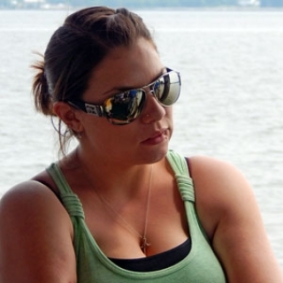Eight students will be presenting the summer work at the Ocean Sciences Meeting in March 2022!
Sarah Black, University of New Mexico Albuquerque
Class Year:
2014Mentor:
Nick Nidzieko, Ph.D.Project Title:
Algorithms to Adaptively Track Salinity Gradients with an Autonomous Underwater Vehicle
Abstract:
A REMUS-600 autonomous underwater vehicle (AUV) was used to test algorithms designed to adaptively track hydrographic features in estuaries and the coastal ocean. These algorithms are derived from animal-inspired models for chemical plume source detection; the current study extends this work to achieve ecosystem-scale measurements (over tens of kilometers) to autonomously follow scalar fields in a quasi-Lagrangian framework. The algorithms were implemented using Mission-Oriented Operating Suite-Interval Programming (MOOS-IvP). We conducted repeated surveys to track salinity in the Choptank River, Maryland to develop and test these algorithms. The key features of the algorithms are the ability to set multiple target thresholds in both the scalar field and the depth range over which thresholds must be met. These algorithms will allow AUVs to track estuarine features of interest such as temperature, salinity, and dissolved oxygen in order to advance basic research on horizontal mixing and circulation in estuaries.



